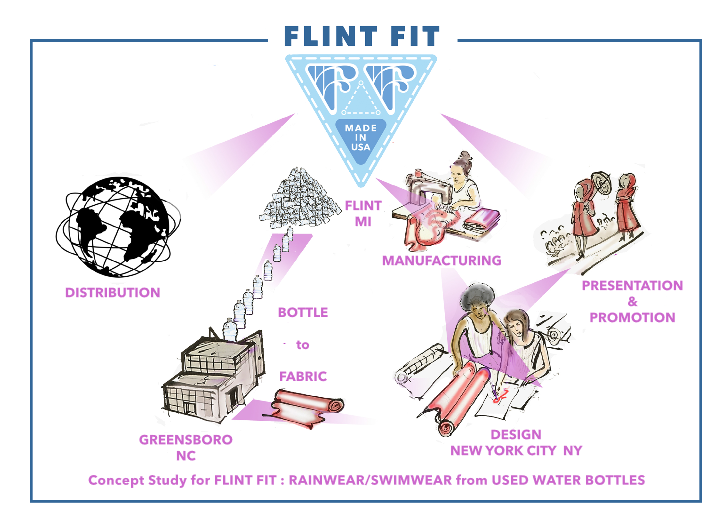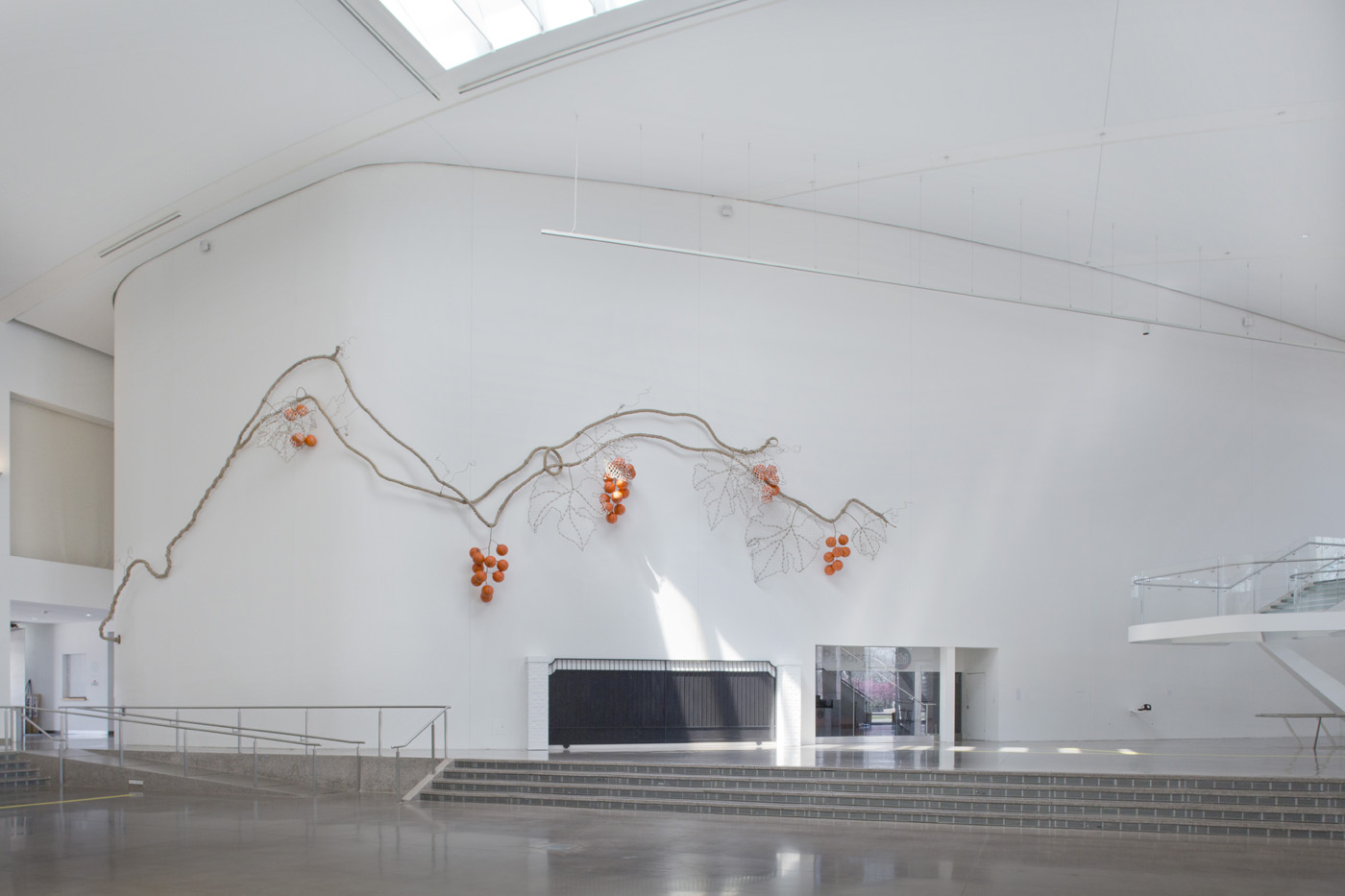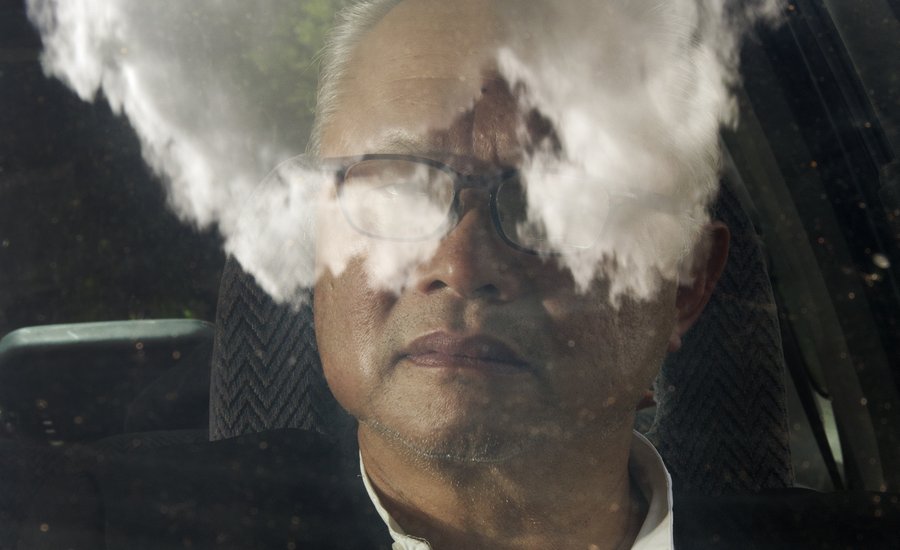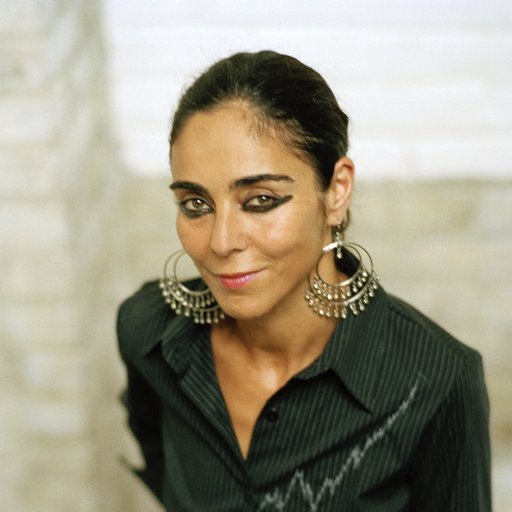Mel Chin is often described as an artist who eludes simple categorization. His wide ranging conceptual practice stems from his own unrelenting process of investigation and provocation, challenging both himself and his audience to broaden the horizon of what art making can and can’t be or do. Chin describes this dogged process of self-critique and adaptation as one of constant "mutations."
His current survey show, exhibited by the Queens Museum and No Longer Empty, a non-profit that orchestrates site-specific installations in vacant NYC storefronts, presents Chin's body of work in all its mutative phases. Aptly titled “Mel Chin: All Over the Place,” the exhibition spans almost 40 years of the artist's work with four brand new commissions located throughout New York City. Two installations in Times Square titled Wake and Unmoored will be Chin's venture into the realm of "mixed reality," and an installation titled Signal, which pays homage to the Haudenosaunee (or the Six Nations of the Iroquois) who were the original settlers, establishing a route that would much later become downtown Manhattan's Broadway-Lafayette subway stop.
While Chin's ouvre is widespread and seemingly disparate, there is a common poetry to everything he does. His works are all formed out of a generous and compassionate sensibility and process that threads all of life through an eye that's both poetic and entropic—they are the products of being aware and engaged.
"All Over the Place" is a fantastic opportunity to observe that poetic thread weave throughout all his work, from ongoing community initiatives like Fundred (ongoing since 2008), to post-colonial sculptures like Cabinet of Craving (2012). For Fundred, Mel Chin orchestrated the design, distribution, and collection of hundreds of thousands of dollar bill templates to be embellished by adults and school children across the nation over the course of ten years to orchestrate a collective voice to combat lead poisoning and to spur legislative action in the US Congress. Since its inception in 2008, Fundred has given voice to over 460,000 citizens nationwide. Meanwhile, Cabinet of Craving offers its take on the monstrosity of colonialism and addiction in the form of a giant, spider-shaped vitrine containing a china tea set on a silver tray in its abdomen, evoking English and Chinese desires that prompted the forced opium trade during the19th century.
In the following interview, Mel Chin discusses his current survey taking place throughout New York City, the importance of criticality, and how to mutate responsibly.
 Diagram of Flint Fit. Courtesy of No Longer Empty.
Diagram of Flint Fit. Courtesy of No Longer Empty.
I tried adding you as a friend on Facebook but you're at your friend limit! Is social media something you use and incorporate into your community-based, social practice, like with Flint Fit?
For Flint, you have to be there. People there are strong and they're going through stuff. They don't need me to track them down, they're busy enough just trying to survive. It's out of respect that I make the trip. You get up and go. Don't depend on the internet to make your connections. Become a real friend.
As for my Facebook issues, in all transparency, a former assistant took over all my Facebook stuff. We accepted everyone we could because we were doing Fundred at the time and thought it would be useful. Now I don't know what to do! I'll see my real friends, and people I actually know on there now, and I can't add them as friends. Are you my friend?
No, you're not allowed to have any more friends.
It started with 25 kids I was teaching down in Arkansas because they didn't do email, they did Facebook. That's where it started. Now it's too many people I don't know, posting things I don't care about. I started Instagram and have been trying that... I just don't really know the hashtag thing very well. Maybe I should hang it up and go back to my wannabe witness protection program and write letters to people occasionally.
Let's talk about your current exhibition at the Queens Museum and throughout the city.
Have you been by?
Unfortunately no, I haven't.
Well I don't really know how are we going to talk about the show if you haven't seen it but I'll leave that up to you... we took over the whole place.
 Temple of the New Gods (2011). Image courtesy of Queens Museum.
Temple of the New Gods (2011). Image courtesy of Queens Museum.
"All Over the Place" is a very apropos description of the breadth of your work. In having to describe what you do to people who are unfamiliar with your practice, I usually say that you tend to work issue to issue. You've addressed topics ranging from the Flint water crisis to English Colonialism to Central Asian and Middle Eastern conflicts. How do you decide what to address?
There is absolutely no recommendation to track down tragedy or dire circumstances to make art. That's not how it's approached. I find myself in situations that compel me to act and use what is in the arsenal or vocabulary of contemporary or conceptual art to address it. The strategy is implicitly mutative. In other words, it evolves and each situation requires a certain thing. The Fundred project is ongoing. I'll be in D.C. tomorrow meeting with leaders, and senators, and people from Flint, Michigan for the four-year anniversary of the Flint water crisis. The lead isn't just in the water but in the blood of children and human beings. The Fundred project gives a tangible form to voices invested in the quest to end childhood lead poisoning. It's evolved to a point where the 460,000-plus bills give us access to different Congressional leaders; we actually show them policy decisions they can take to stop the problem forever. We don't lobby, we don't hector, we don't demand—we actually have "capital drawn by the people," that is another kind of value. And it makes sense to represent children who are most threatened by lead, who can't vote but with parents who can; they just don't want to be poisoned anymore! As an art project, we represent the value of people.
It's also about creatively reacting to people with responsibility you are willing to take on. Take Flint Fit, for example. When I hear Flint citizens say, "Trump's been here. Hillary's been here. The recording artists and rappers have all been here... Everybody's been here. But they're gone, and we still don't have clean water! So how are you going to use us?" When I come into those confrontations, I listen, and I say, "Okay... do you mind if I pay you for your bottles that you're throwing away?" That's how something starts. "Oh, before I do that, can I see if there's a sewing shop in town?" Then the whole concept of turning these plastic water bottles into fiber then into fabric and finally into fashion, raincoats, and swimwear just makes sense. Lots of people probably have such an idea, but nowhere does it fit better than in Flint. I was directed to a commercial sewing center at the NEW Life Center where women who have survived domestic abuse sew up clothes in a basketball court!
As the great basketball player Hakeem Olajuwon said, "The game is won and lost under the boards." I stood on the court with the women and sewing machines thinking, "The game begins now!" It's the strength of the people of Flint and the capacities they have that starts it up, but you need to get permission. That's key to me with social projects. You have to go a little deeper. It's not about bringing in an idea and saying, "I'm going to rescue you!" In fact, the hope of rescuing others (and myself) might begin in these places.
 Flint Fit (2018). Image courtesy of Queens Museum.
Flint Fit (2018). Image courtesy of Queens Museum.
I didn't really have any presumptions. I just kind of got excited about the possibilities and said, "Okay, if you don't have a place to turn this into thread, let me find somewhere." I went back to North Carolina and found The UNIFI Corporation, Repreve —they recycle bottles into thread that are woven into fabrics for brands like Patagonia. I got a hold of them and said "Hey, if I shipped a bunch of bottles down there could you turn it into thread and find a mill to weave it?". Then I needed a designer! I'd heard about Tracy Reese who is originally from Michigan, so I came back up to New York and said "Tracy, do you mind designing some rainwear and swimwear out of this stuff?" and she says yes! And so that begins, and I make sure it all happens.
Once the clothes were made, we had a big old fashion show at the museum and brought the Flint people as the real VIPs who collected the bottles and sewed the clothes. The fashion show and art exhibition is one step, but the poetry demands that it become fully realized back in Flint. So now we'll look for someone to do a business model, to connect three strong places to make Flint Fit come to life. Projects like Revival field, Fundred, Flint Fit, The Gala Committee's In The Name of the Place are all united by a particular poetry. They read right conceptually and beautiful when realized.
You want to make it sustainable and long lasting.
That is correct. You give it legs, and you disappear. Flint Fit will be great when I can one day buy a piece of Flint Fit rainwear, you know? Made in Michigan. I'll know it's made well and designed well. We're even looking at how microfibers play into all this. There's a piece called Sea to See in the exhibition that's the visualized data of oceanographers, letting their composited flows of info. serve as portraits of the oceans. Some of the research is on the impact of microfiber and plastics on sea life. I know them, so if they got connected with the Flint Fit project, they'd want to know: how do you make this fabric not shed microfibers, and if it does, how can we stop it before it gets to the water? I'll have to respond with a solution (in development) to keep the epic poem going.
 Sea to See (2018). Image courtesy of Queens Museum.
Sea to See (2018). Image courtesy of Queens Museum.
You have a video series titled S.O.S. where you interview people in the Bronx and have them directly address whoever the current POTUS is. Both George W. Bush and Barack Obama have received S.O.S. videos. Have you sent one to Donald Trump?
It's in the show. We did it. It's got all five boroughs this time—it's all over the place and he'll get his copy!
Would you ever consider yourself an activist?
I don't use those terms to define myself because any time you do that, it's a big old trap and you'll probably end up less creative about it. Recently, I've just started telling people that I'm trying to become an artist, which is true. If it's going to be defined, it'll be defined in my terms, and I don't know if I've done "x" up to now. I'm not giving myself a break yet.
Criticality is important.
You have to challenge yourself.
I wish I didn't have to do it so much, but I do. I'd like to take a break.
I know you're currently living and working in North Carolina, in what you call your "wannabe witness protection program" but you'd lived in New York and Houston before then.
I was born and raised in Houston and lived in New York for about twenty years.
Despite having grown up in big cities, you've always been deeply invested in the ecology and in the environment. What planted that initial seed?
Well, you just have to read a couple of things. In the '60s there was a big movement around all of that. You'd read Rachel Carson, listen to smart people, and you look at your own behavior a little bit and you'd know. We're not that cool after all in relation to the world, and never have been. If anything, art is a slight reprieve but you can't be surprised by your consumption. It's about being aware, from early days. I started the first ecology club in high school, in 1970. Can you imagine that? Who cared about that in Texas? But I did it because it seemed like the right idea.
I love Neil de Grasse Tyson. He's the coolest! He says, "It's odd" to talk about saving the Earth because it will survive but You may not —that's what the deal is. So if loss is imminent making art might be about slowing down the loss so that you can maybe, in the spare moments, observe what's left of your humanity.
Do you feel like there's been a shift in how we approach the environment and how we talk about ecology in the past forty years?
I know that Revival Field did accomplish one thing, for sure. It created a scientific technology. It created science as opposed to using science. We had a goal and had to prove it to the world, and science was born out of it. So that wasn't too shabby. It helped create something real.
 Revival Field (1991-ongoing). Image courtesy of Queens Museum
Revival Field (1991-ongoing). Image courtesy of Queens Museum
What's the difference between ecology and the environment?
With English as a second language, I really don't need to go there supplying definitions. I can see how certain works pertain more to one and not the other. Ecological is essentially about relationships.
Some of your earliest pieces were earthworks. What do you think of pieces like Robert Smithson's Spiral Jetty?
In that early See-Saw piece I was trying to roll a bunch of -isms into one—conceptualism minimalism, kineticism, Spiral Jetty was an inspiring liberating work for me. I do believe that Smithson was still involved with the formal configurations, but he did at least give a nod to geological time and ecology. You could say it starts there and ends there, all done...no more earthworks needed. So to move into a piece like Revival Field, I had to conceive of a project that could be finished after I was dead. Could I make this work strong enough conceptually to live on? It had to have a capacity to survive beyond your figurehead status as a so-called "artist." I had to be willing to give up ownership, become a blur, a memory and not be an obstacle.
Keep the term of "art" flexible. Practice some pilates or yoga on that term.
If anything, I have a mutative process. That's something that's been isolated as my M.O. by curator Miranda Lash in my 2014 retrospective. Apparently that term is now becoming my signature so I'd better get rid of that too! Damn...
You have to mutate out of mutating.
Yeah! What the hell... I thought I was free!
RELATED ARTICLES:
FROM "EW" TO A VIEW: HOW A FORMER STATEN ISLAND LANDFILL COULD REPRESENT THE FUTURE OF ART IN PARKS
"LIKE NOAH HUNTING THE ANIMALS HE SAVED ON THE ARK": MARK DION ON THE CONTRADICTIONS OF ENVIRONMENTALISM
9 ARTISTS CHANGING THE WAY WE THINK ABOUT THE ENVIRONMENT



























